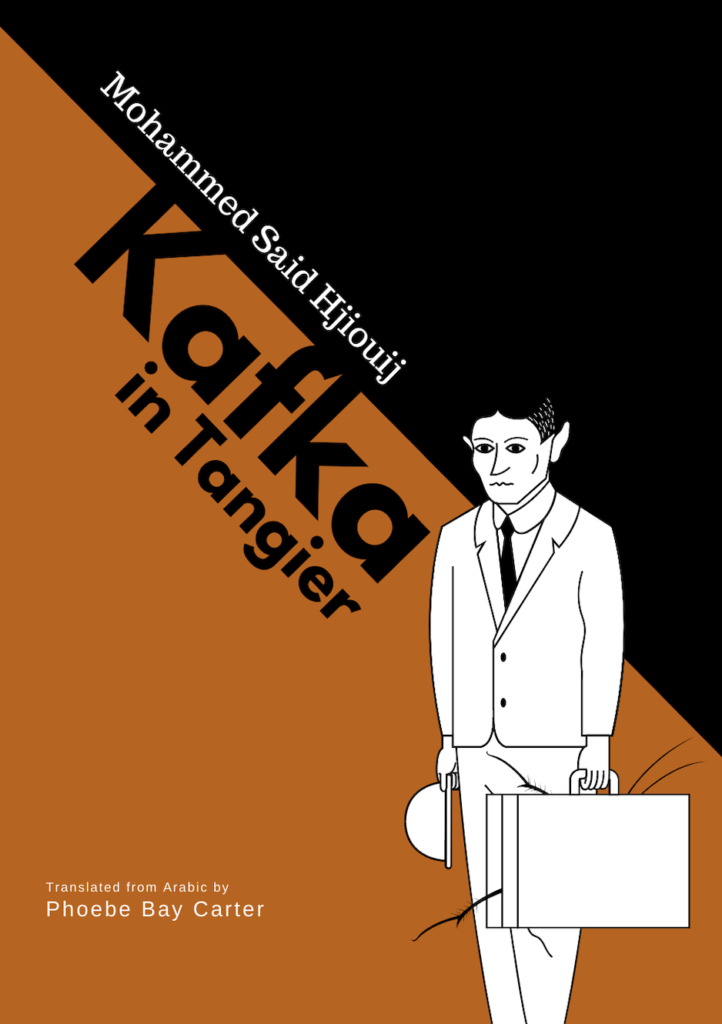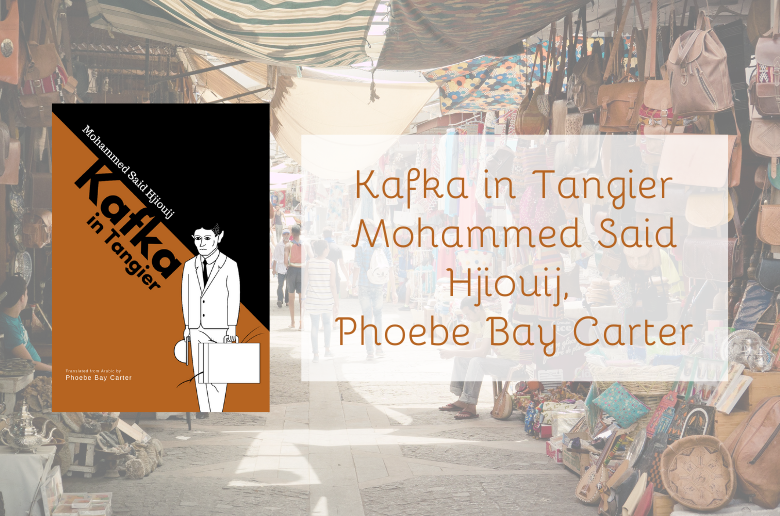Summary
Kafka in Tangier is a reinterpretation of Kafka’s Metamorphosis, exploring themes of transformation, alienation, and power. At once the story of a family and a chilling portrait of a city, the novella follows Jawad Al-Idrisi, an overworked teacher with disappointed ambitions of becoming a literary critic, after he awakens one morning to find himself transformed into a monster. In this waking nightmare, he is forced to confront both his family’s secrets and the oppressive systems of contemporary society.
First, I’d like to say thank you to the author, Mohammed Said Hjiouij, the translator, Phoebe Bay Carter, and NetGalley for providing me with a copy of this book.
The Story
Kafka in Tangier is a reinterpretation of Franz Kafka’s Metamorphosis that is set in Tangier and follows the unfortunate transformation of Jawad Al-Idrisi, a teacher. I studied Kafka’s Metamorphosis at university and this unsettling story really got to me. So when this reimagining of the story popped up on NetGalley, I had to give it a read.
There is no denying that the tale I am telling you […] shares a certain resemblance with the story it inspired, the one written by Franz Kafka over a century ago. That said, it is most certainly not an exact copy.
Mohammed Said Hjiouij, Phoebe Bay Carter, Kafka in Tangier
Jawad’s story is told from a mix of perspectives: first, from his own perspective once he’s been transformed into a hideous monster. Second, from his mother’s perspective as she tries to help her son break his “curse”. Third, from his father’s perspective, and fourth, from his younger sister’s perspective in the form of diary entries.
This mix of perspectives and narrative styles differs from Kafka’s story and I liked this change. Dedicating space to each of the characters involved in this series of unfortunate events gives you the chance to consider the situation from different perspectives. I also liked that each character’s chapters gave us some background and insight into their life – who they are, where they come from, how they’ve ended up like they have. This made the characters three dimensional and kept my mind open as I was reading.
The narrator in Jawad’s chapters speaks directly to the reader, the unnamed speaker is conversational and engaging. They drop hints here and there during their narration about what’s to come and what we’ll learn about each of the characters. I enjoy this style of writing as it gives the story almost a feeling of life – I could see this story being produced for the theatre.
Now onto the question: Is Kafka in Tangier an exact copy of The Metamorphosis? It’s similar, but not the same. The main difference being that we know exactly what kind of creature Jawad is transformed into based on a detailed description provided by the author. I wonder if Mohammed Said Hjiouij’s decision to do this – to explicitly describe Jawad after his metamorphosis – was done to satisfy the reader. It removes the constant questioning of what he actually looks like when he wakes up and could be removing a potential distraction for the reader.
The other big difference being the attitude of Jawad’s family towards him once he has been transformed (or cursed, as his mother believes). Jawad’s family are a lot more sympathetic towards him than Gregor Samsa’s family. Saying that, there are still secrets, lying and betrayal within the Al-Idrisi family. But overall, I felt Jawad’s family still cared about him by the end of the story. The endings of both stories are similar – I won’t share any spoilers. They’re melancholy and “Kafka-esque”.
The Translation
Phoebe Bay Carter’s translation of the novella is conversational and easy going, presumably replicating the original. The narrator’s engaging voice and Hind’s (Jawad’s sister) diary-like chapters draw you into the story. You really feel like you’re part of the story.
The translator uses footnotes to help explain a couple of cultural references. There’s lots of debate in translation theory about using footnotes in translations. The question that always arises: Shouldn’t the translation be enough without the need for footnotes? I’m indifferent to the use of footnotes. I don’t necessarily miss them if they’re not there but I don’t find them distracting if they are.
In the case of Kafka in Tangier, the footnotes were pretty interesting – giving me that extra bit of information about a country and a culture I’m not familiar with. One footnote (footnote 5) was particularly interesting; it explained the a bit of history of the Arabic version of “Once upon a time”:
This chapter begins, in the Arabic, with kan ya ma kan, a phrase which, like “once upon a time”, is used by Scheherazade and other storytellers at the beginning of their tales. Its literal meaning, “there was, or there wasn’t,” signals to listeners that what they are about to hear may be truth, or fancy, or some of both.
Phoebe Bay Carter, Kafka in Tangier
Reading a book in translation gives you the chance to learn something new about a culture or language. And Phoebe Bay Carter’s use of footnotes in this novella were spot on – answering the questions that I had as I was reading.
Final Thoughts
Kafka in Tangier is a quick read – with only 87 pages – that’s a nice introduction to Moroccan literature. Mohammed Said Hjiouij has put an interesting twist on a well-known story but made it his own. While I recognised the inspiration behind the story, I wouldn’t say that this story is a copy. It’s a story in its own right – with its own unique characters and storyline. Phoebe Bay Carter has translated Mohammed Said Hjiouij’s writing fabulously – it’s engaging and dynamic and her use of footnotes was spot on.
Bookshop.org | Amazon | Goodreads

